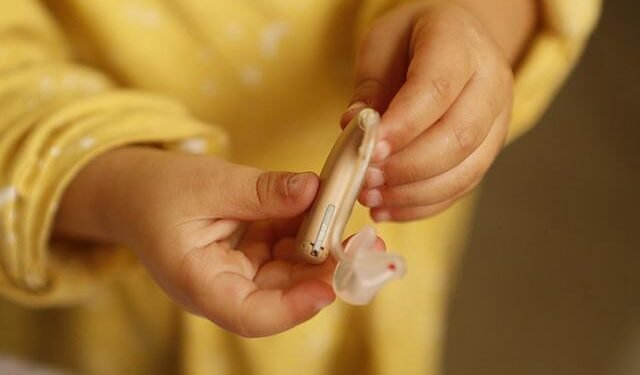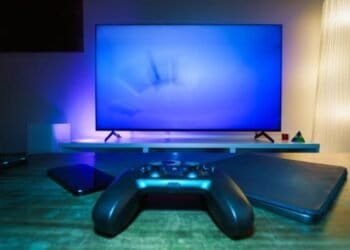Discover how an ear camera transformed my ear care routine, cleaner, safer, and smarter. Learn what to buy and how to use it right!
If you had told me a year ago that I would be writing a love letter to an ear camera, I would have laughed out loud. A camera for your ear? Seriously? But here I am, fully in love with a tiny tool that revolutionized how I clean my ears. You won’t want to go back after seeing the interior of your ear canal in HD.
This isn’t merely a review of technology. It’s my story. A story of being curious, a little scared (hello, unexplained ear itch), a lot of trial and error, and finally finding a tool that made me feel better and very happy. And honestly, discovering how to access traffic camera footage and later realizing I could use similar tech to see inside my own ear? That connection blew my mind.
So get comfortable and have a cup of tea. I’m going to give you a thorough dive (pun intended) into ear cameras: what they are, why they matter, how to pick the best one, and how to use them properly. You might even want to look inside your own ear by the end.
What the Heck is an Ear Camera?
Let’s get started with the basics. An ear camera, often called an otoscope or ear inspection camera, is a small device containing a light and camera attached to a thin, generally flexible, probe. You can look inside your ear canal in real time when you connect it to your phone, tablet, or computer.
Sounds like science fiction? That’s what I thought too. I thought “ear camera” was a future device that only doctors could use when I first heard it. But see, it’s shockingly easy to get to.
But these tools are becoming more and more popular for personal usage, thanks to improvements in smartphone technology and the growing interest in doing your own health care.
Why I got an Ear Camera?
I started my adventure when my left ear continued bothering me. Not quite pain, but an itch that won’t go away and hearing that is sometimes muted. I didn’t think much of it at first. Then came the swabs made of cotton. That’s a big mistake.
I did what a lot of people do: I picked up a Q-tip and poked about. Not only did it not assist, but it probably made things worse. I really thought I had pushed something too far at one point.
I was so annoyed that I Googled “How to clean ears safely.” That’s when I first heard the term “ear camera.” I was interested, so I did some research and watched too many YouTube videos before ordering one. And my, what a game-changer.
I now appreciate how much we don’t take care of our ears since I got my first ear camera.
How does an Ear Camera work?
This is the short version:
It’s like a selfie stick for your ear, but far more useful.
What to Look for When Getting an Ear Camera
I didn’t know what to look for when I bought mine. If you’re new to the game, here’s what I wish someone had informed me:
1. Resolution is important.
At least 1080p HD is what you should aim for. You need to be able to see everything clearly, especially if you’re looking for symptoms of infection or wax build-up.
2. Wireless is great
It’s considerably easier to move around with wireless models. Just make sure the Wi-Fi is working well.
3. Check for Compatibility
Some models only operate with iOS or Android. Make sure you check again before you buy.
4. Tips that can be changed
Keeping things clean is important. Pick a model with tips that can be taken off and cleaned (silicone is best).
5. Safety features built in
To avoid going too far in, look for temperature control, a safe tip design, and depth limiters.
Best Ear Cameras (From Someone Who’s Tried a Few)
1. Bebird N3 Pro
Very good resolution, a magnetic charging base, and an app that is very easy to use. A good investment.
2. Otoscope from Teslong
Affordable and dependable. Good for people who have never done it before.
3. WiFi Otoscope from ScopeAround
A good choice in the middle range. Works on both iOS and Android.
4. Anykit USB Otoscope
This is a strong and cheap option if you don’t mind wires.
If you’re having trouble choosing, simply consider that even the most basic ear camera is a big step forward from utilizing cotton swabs without knowing what you’re doing.
What I Saw the First Time I Used an Ear Camera
Okay, let’s be honest: I was a little scared. The equipment looked like something you would find at the dentist’s office. But after I set it up, attached it to my phone, and carefully put it in, the whole thing was… strangely interesting.
I saw ear wax (not as awful as I thought it would be), microscopic hair follicles, and the walls of my ear canal. No monsters. No big holes. Just a vivid picture of what had been bothering me for weeks.
And what about the small blockage? With the appropriate tip, it will be gone in seconds.
How to Safely Use an Ear Camera
Let me stress that this tool is only safe if you use it correctly.
Here are my rules for being safe:
FAQs
Q. Is it safe to clean ears at home with an ear camera?
Yes, if you use it gently and follow safety instructions. It’s way better than blindly poking with Q-tips.
Q. Can I use it on my child?
Some cameras are safe for kids, but I’d recommend asking your pediatrician first.
Q. What if I see something unusual?
Take a screenshot and consult a doctor. These tools are great for monitoring, but they’re not a substitute for professional diagnosis.
Q. Can I use it for other purposes?
Actually, yes! Some people use them to check their nose, teeth, or even inspect small electronics.












